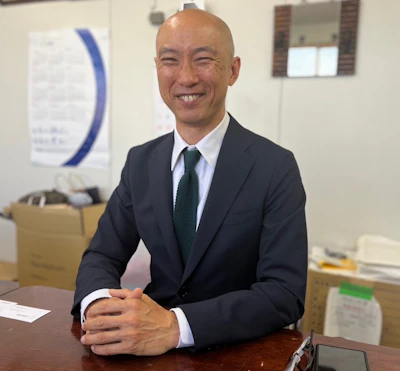01.09FRI
2024.07.24
How "Shimokitazawa" Became the Mecca of Vintage Clothing: Insights from the Owner of Toyo Department Store

Shimokitazawa, located in Setagaya, Tokyo, buzzes with fashion-loving Generation Z and inbound tourists walking the streets behind the station. This area, home to about 200 vintage clothing stores, is known as Japan's leading "Mecca of Vintage Clothing."
Shimokitazawa offers a stark contrast to places like Omotesando and Daikanyama, which are only a 10-20 minute train ride away via Shibuya. While lacking flagships of high-end brands, its buildings exude a charmingly worn-out feel. Yet, the freedom of fashion is undeniably abundant.
We spoke with Katsunori Koshimizu, President of Toyo Kogyo and Vice Chairman of the Shimokita Shotengai Shinko Kumiai, to discuss the unique development of this one-of-a-kind neighborhood and its future.
PROFILE

Katsunori Koshimizu
Toyo Kogyo Co., Ltd. President and CEO
Shimokita Shotengai Shinko Kumiai Vice Chairman, Town Development Committee Chairman
Toyo Department Store: Leading Shimokitazawa's Vintage Culture
Born and raised in Shimokitazawa, Koshimizu is now at the forefront of its development as both the head of local real estate management company "Toyo Kogyo" and Vice Chairman of the Shimokita Shotengai Shinko Kumiai.CONCEPT VIDEO
"fashion tech news" Unveils New Logo & Concept Video
TOP ARTICLES
RELATED ARTICLES
CONCEPT VIDEO
"fashion tech news" Unveils New Logo & Concept Video
CONTACT
If you have any questions or enquiries, please enter your details in the form below.






.JPG?w=400&fm=webp)




![[No.4]The Secret to the Expressive Techniques Only Living National Treasure Akihiro Maeta Can Create](https://images.microcms-assets.io/assets/1775a3633c8b428d9f011c6a758a8a5c/9c7bdfdde79840788867596b54617615/OGP4.JPG?w=400&fm=webp)





.png?w=400&fm=webp)

